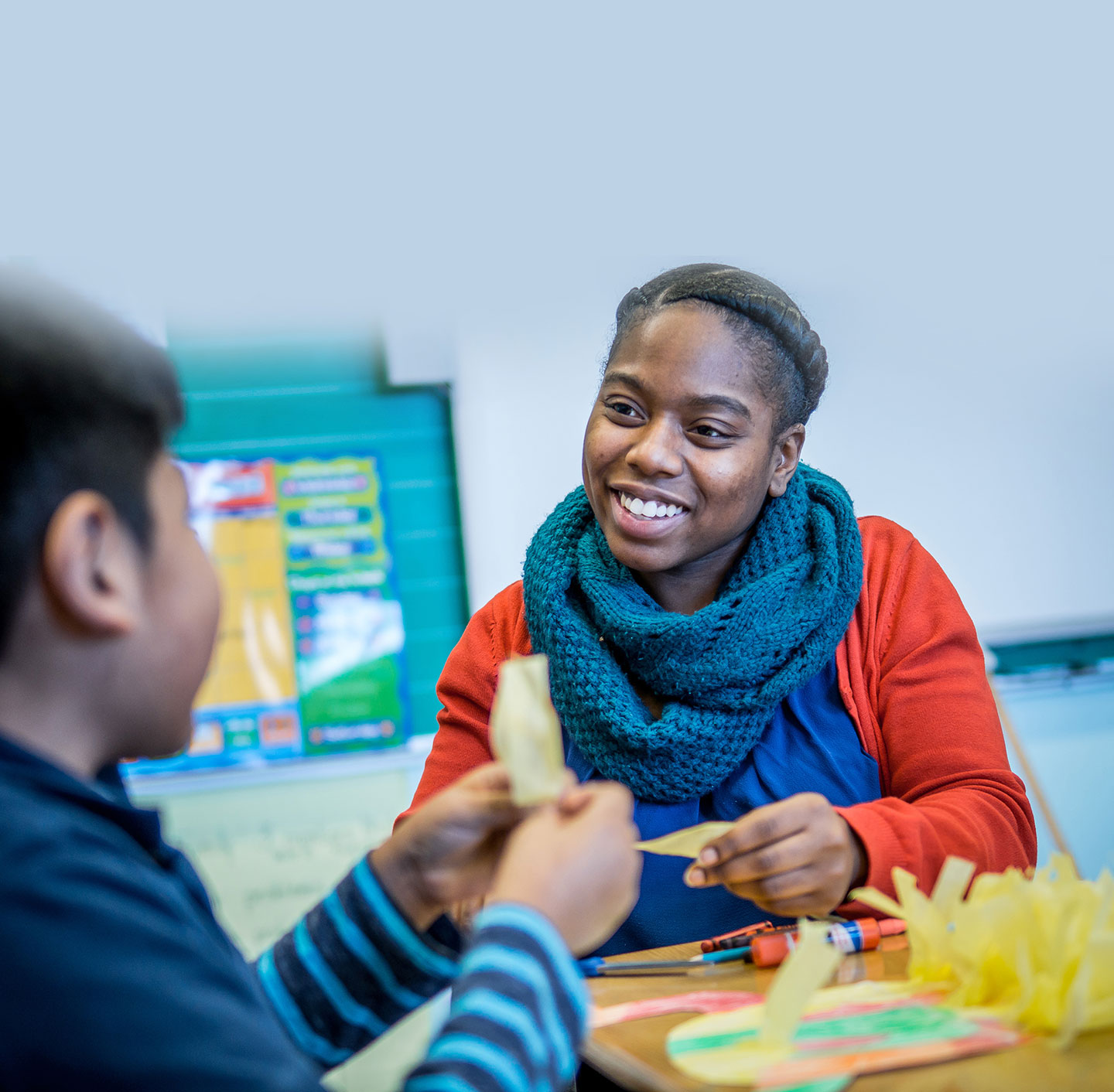
Those Who Can, Teach
Innovative programs tackle national teacher shortage
Through the Newark-Montclair Urban Teacher Residency program, Carla Nisbett has returned to her hometown as a first-year elementary teacher at South Street School in Newark.
Asked to name the most rewarding thing about being a teacher, Janae Taylor has a ready response: “Knowing that you’ve had a positive impact on someone’s life is a great feeling.”
Taylor, who is in her fifth year of teaching math at Newark Arts High School, is among 72 teachers that have gone through Montclair State’s teacher residency program and are now teaching in Newark or other urban districts that have struggled to keep teachers.
“I was hired after I did my student teaching here,” says the 2012 graduate. “I’ve been here ever since and love it.”
The Newark-Montclair Urban Teacher Residency (NMUTR) program is one of several innovative and federally funded University programs that are directly aimed at reversing a national teacher shortage – felt particularly in cities and in the areas of science, technology, engineering and math, where the shortage is hardest felt.
Since its beginnings more than 100 years ago as a teacher’s college, Montclair State has been a leader in teacher education. Today, programs such as NMUTR, the Robert Noyce Teacher Scholarship Program and the Woodrow Wilson Teaching Fellowships are helping to prepare students for meaningful careers in education, starting – and often staying – in struggling urban school districts like Newark.
College of Education and Human Services Dean Tamara Lucas says the College has received more than $25 million in recent years to support STEM teacher preparation. “That helps us provide students with the skills they need to be excellent teachers and make a lasting impact on the lives of young people across New Jersey,” she says.
Indeed, U.S. News & World Report ranks Montclair State among the nation’s top 100 graduate schools for education and places its graduate programs in both elementary and secondary teacher education among the top 20 in the country – a distinction unmatched by any other New Jersey institution.
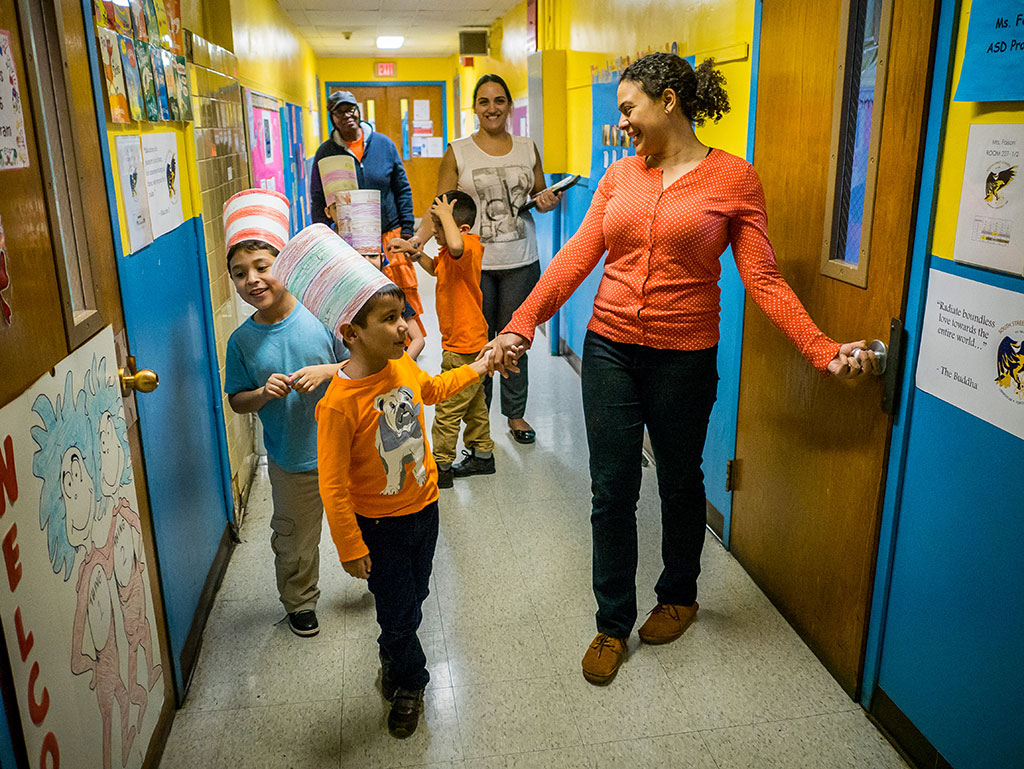
Coming Full Circle
Taylor is one of a handful of Newark natives who have come full circle – from students to teachers – in the district where they grew up. “I’ve always wanted to work in Newark,” she explains. “As one who had so many things to overcome – from bad influences to the violence around me – I wanted to help those around me.”
Assistant Superintendent of Newark Public Schools Roger Leon, who earned his master’s degree from Montclair State in 1996, was University High School principal when Taylor was a student there. “During her senior year, she wrote that her classmates should focus on unity, humanity and scholarship,” he recalls. “I’m glad to learn she is true to her words and is helping her students maintain the same focus.”
Taylor’s love of math was fostered in high school by her math teacher, David Scutari, who also earned master’s degrees in Teaching and in Educational Leadership at Montclair State. He later encouraged her to apply to the residency program.
“To think that I’ve played even a small part in her journey is exceptionally humbling,” he says. “With each milestone she reaches and accomplishment she achieves, my own passion for the profession is reinvigorated.”
The residency program, funded by a pair of consecutive five-year, multi-million-dollar U.S. Department of Education grants, is an immersive apprenticeship program for Master of Arts in Teaching candidates who commit to teaching in Newark public schools for three years after they graduate. As residents, they teach on-site for an entire academic year. After graduation, the program provides three years of additional mentoring and support.
The University’s Center of Pedagogy Director Jennifer Robinson says the program has not only prepared and placed outstanding teachers in Newark’s schools, it has given faculty an opportunity to work in the schools to prepare teacher candidates on the job. “Because faculty are on-site teaching candidates how to teach,” she says, “graduates are much better prepared.”
For instance, Ariana Calderon, a 2014 residency program graduate and bilingual biology teacher at East Side High School, chose the program because of the extended hands-on classroom experience it gives prospective teachers. “Many programs only give teachers a few weeks of student teaching in a classroom before thrusting them into their own classrooms after graduation. Instead, I was able to have an entire year of experience in a classroom with a mentor teacher.”
Like Taylor, Calderon has returned to her hometown to teach. Her East Side High School biology teacher, Karina Monteiro, suggested she apply to the residency program, where Monteiro mentored her.
“I just love having the opportunity to give my students the space and attention they need to develop. It’s not always easy, but it is definitely worth it.”
“There has been nothing more rewarding as a teacher than to have watched Ariana grow into the talented, dedicated and passionate educator she is today,” says Monteiro.
Calderon plans to continue teaching after fulfilling her three-year commitment. “I do enjoy teaching and, as tough as it has been, our students need and deserve the well-prepared teachers that this program produces,” she says.
First-year special education teacher Carla Nisbett also has returned home to Newark to teach. “Working with students with autism is unique from student to student,” the South Street School teacher says. “I just love having the opportunity to give my students the space and attention they need to develop. It’s not always easy, but it is definitely worth it.”
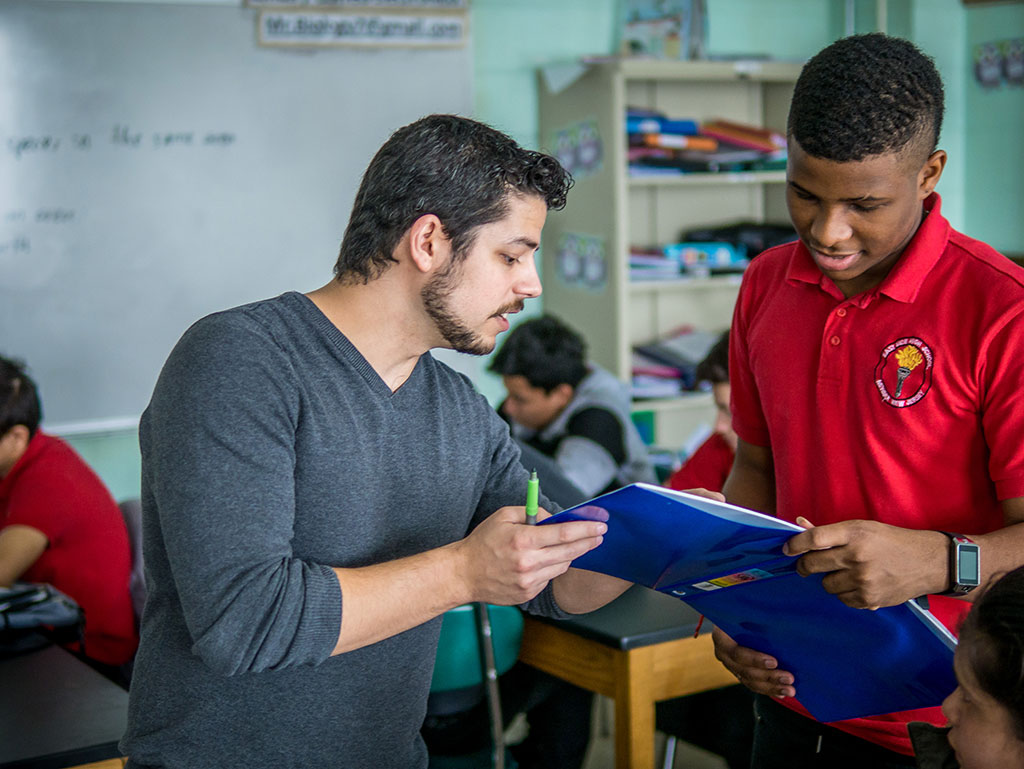
According to Susan Taylor, the program’s director, who got her master’s degree from Montclair State in 1982, the University studied what urban schools need in order to better address the shortage of qualified teachers in Newark. “And when we select people for the program, we select the right people,” she says.
Creating Excitement for Teaching STEM Courses
Montclair State is one of five New Jersey universities offering Woodrow Wilson Teaching Fellowships that help train and place high-quality STEM teachers in high-need urban secondary schools. This year, 11 students are enrolled in the national program, which has already graduated 23 teachers.
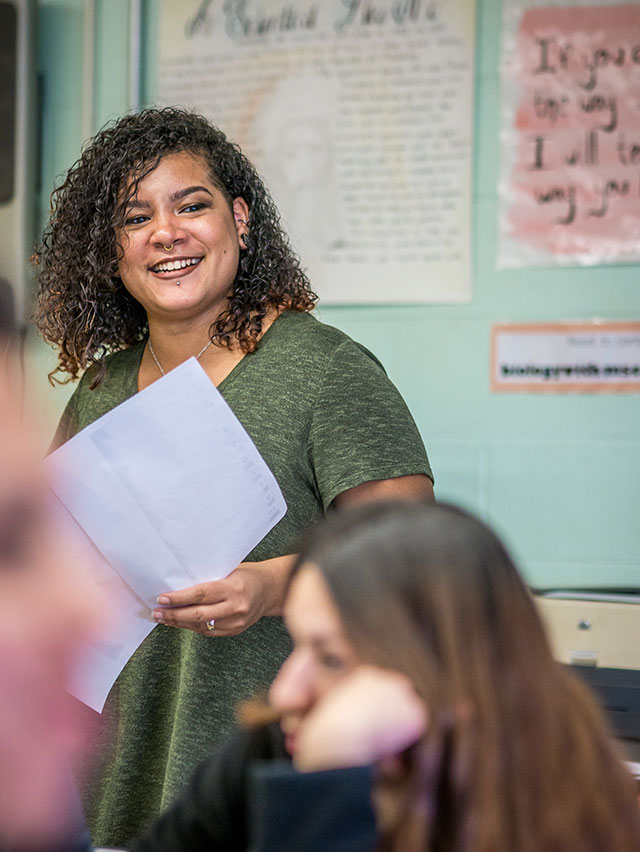
Woodrow Wilson Fellows enroll in a program that mirrors the Newark-Montclair Urban Teacher Residency program in most respects. “It uses the residency model
to maximize the time fellows spend in classrooms and provides coursework that is embedded in their daily practice, which is the most authentic and effective way to prepare teachers,” notes Woodrow Wilson Teaching Fellowship Director Julianne Bello.
Woodrow Wilson Fellows also receive induction support during their three years of required teaching in secondary schools in the high-need districts of their choice.
Both programs have helped diversify the teacher population in New Jersey, where there is a shortage of teachers of color. Nearly half of the teacher candidates from these two programs identify themselves as members of an underrepresented group.
Beyond Newark, the National Science Foundation’s Robert Noyce Teacher Scholarship Program encourages talented STEM students to teach in high-need urban schools. With the help of a $1,106,026 National Science Foundation grant, eligible mathematics majors will soon take part in a scholarship program preparing them to teach math in the New Jersey elementary schools that need them most.
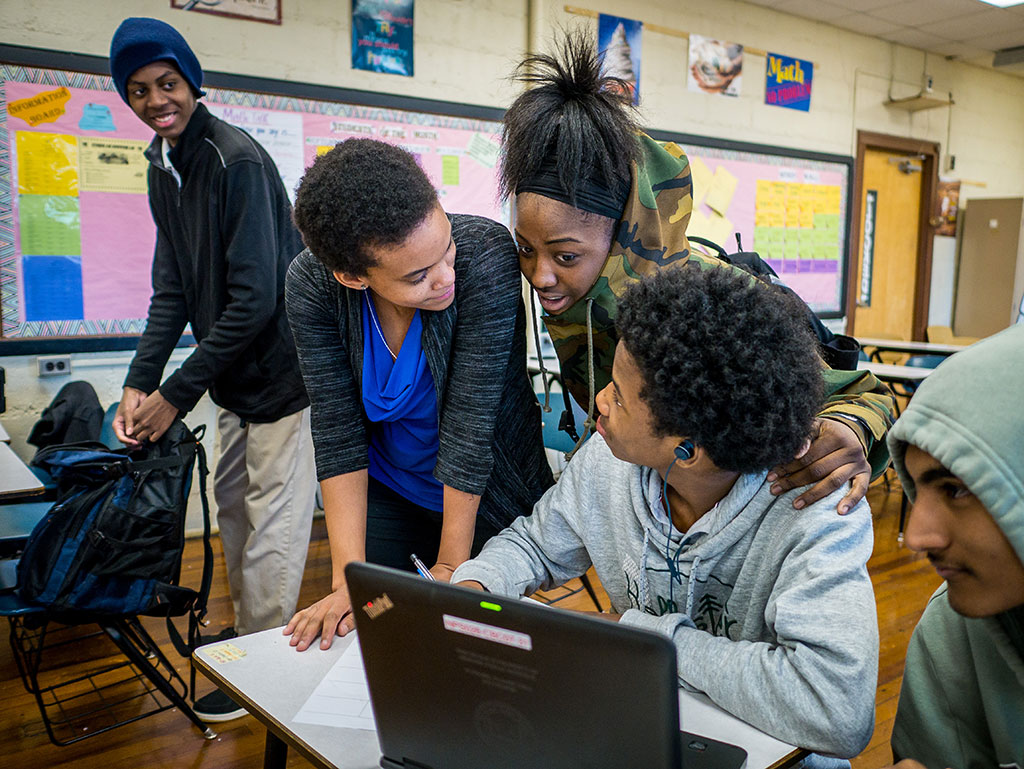
This is the second Robert Noyce Teacher Scholarship Program administered by the University. Some 22 undergraduate chemistry, physics, earth science and biology majors have received Noyce scholarships since 2013, and seven graduates are now teaching in New Jersey Schools.
“For every year of support, Noyce Scholars agree to teach in a high-need school in New Jersey for two years,” explains Biology Professor Sandra Adams, who directs the program together with Secondary and Special Education Professor Douglas Larkin.
Take senior Kathryn Beatty, for example. She is one of 13 Noyce Scholars who is looking forward to the support she will get as a biology teacher. “I think support in the first year after graduating is an absolute must, as many teachers leave the profession after five years,” she says. “This is an invaluable tool for all new teachers.”
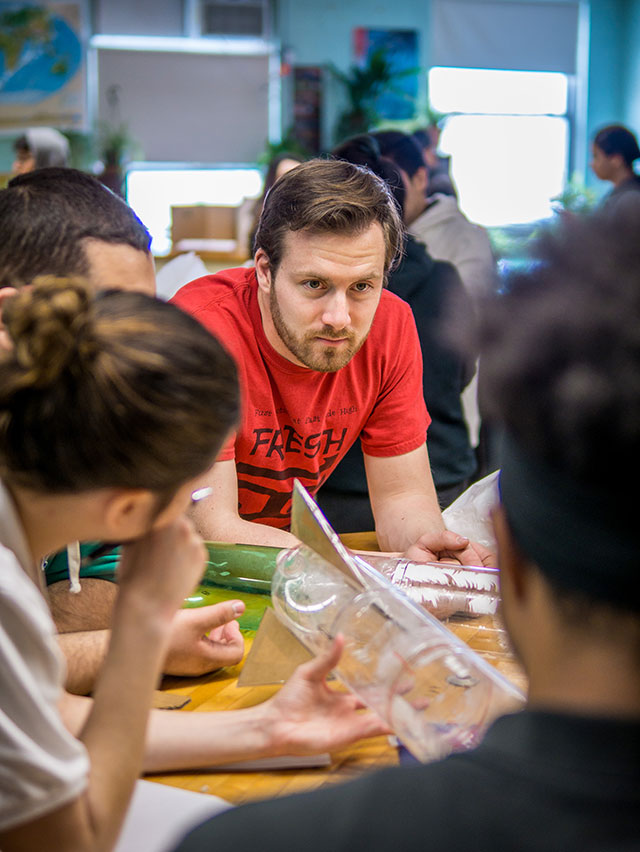
Recruiting Tomorrow’s Teachers Today
Always looking to create a pipeline of future teachers, the University looks to recruit prospective teachers while they are still in high school. In January, hundreds of high school students attending the New Jersey Future Educators Conference at Montclair State learned it is never too early to plan for a teaching career.
The Teacher Education Advocacy Center at Montclair State partnered with the New Jersey Future Educators Association for the daylong event, which introduced attendees to teaching through presentations by top New Jersey educators, including Gemar Mills, a 2005 graduate who taught math and became the principal of Newark’s Shabazz High School and is credited with turning the once-failing school around.
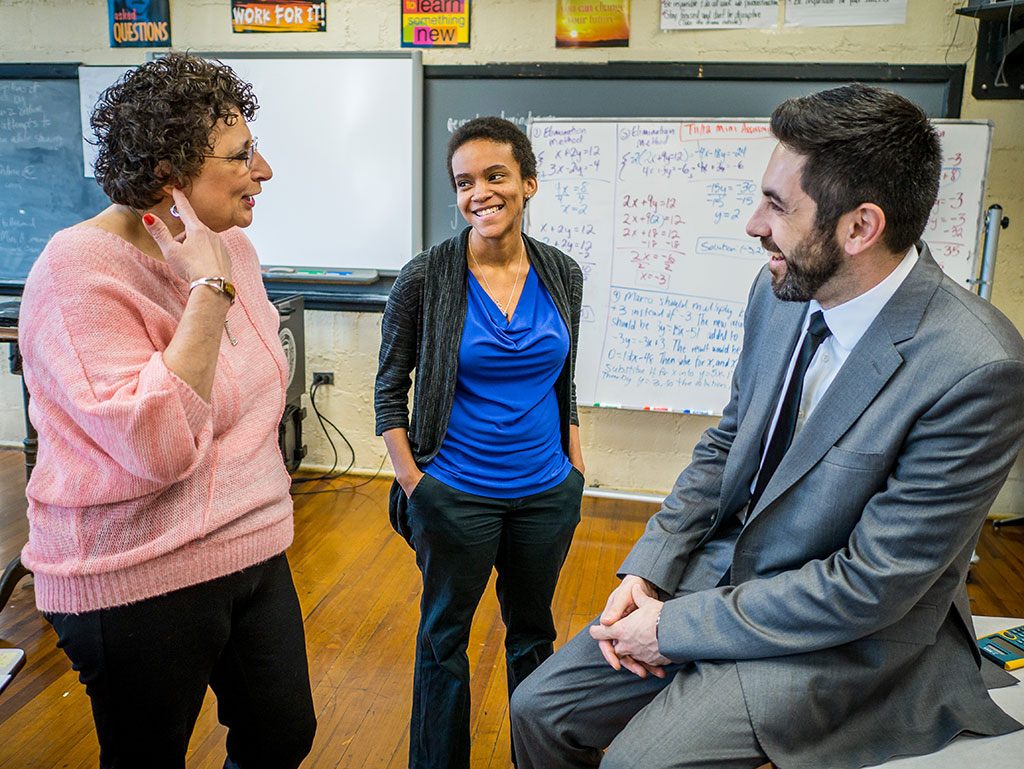
According to Carolina Gonzalez, the Center’s director, the conference encourages and supports students considering teaching careers. “With an estimated shortage in the United States of approximately 64,000 teachers that’s projected to increase to as many as 112,000 by 2018,” she says, “events like this are the steps needed to reverse the trend.”